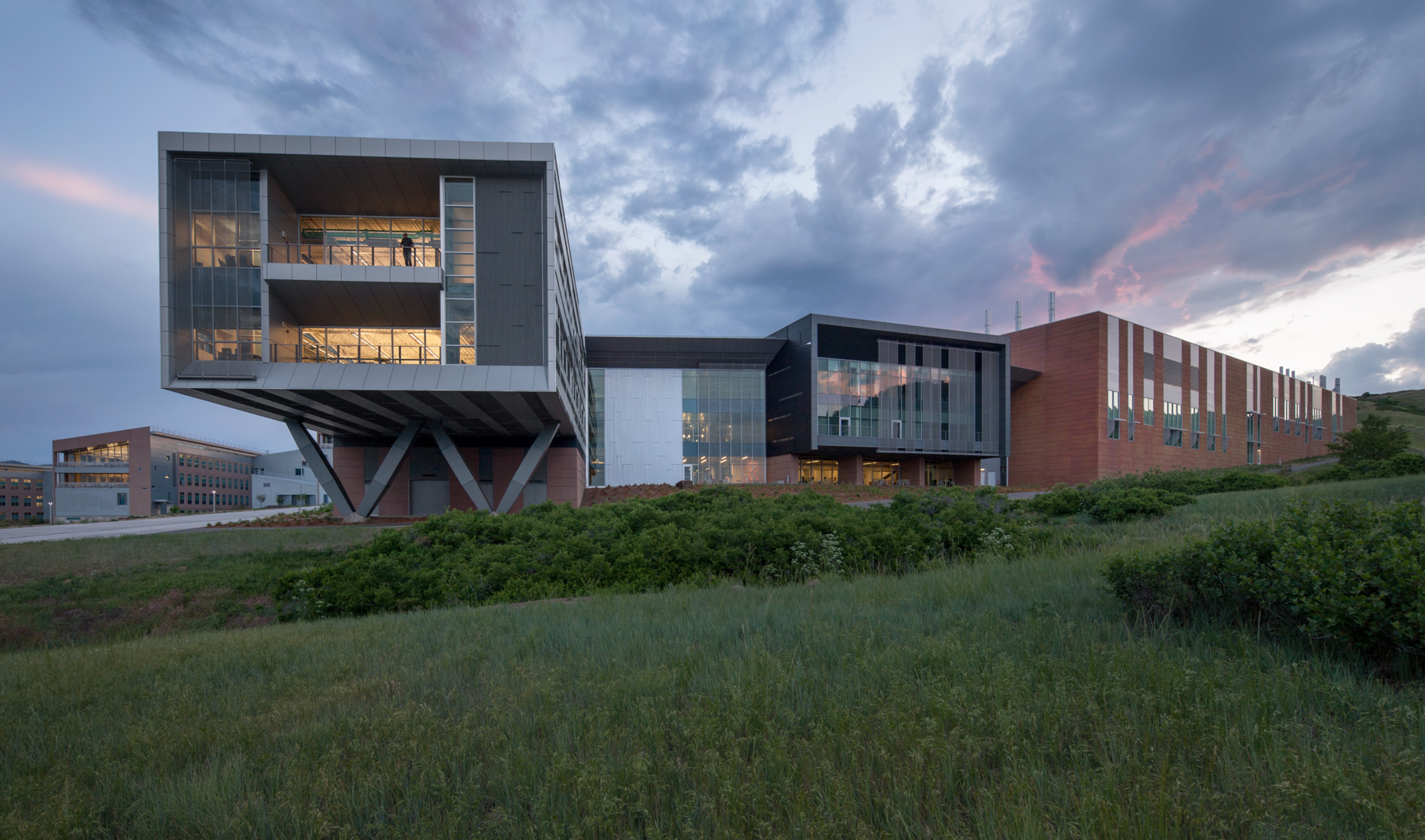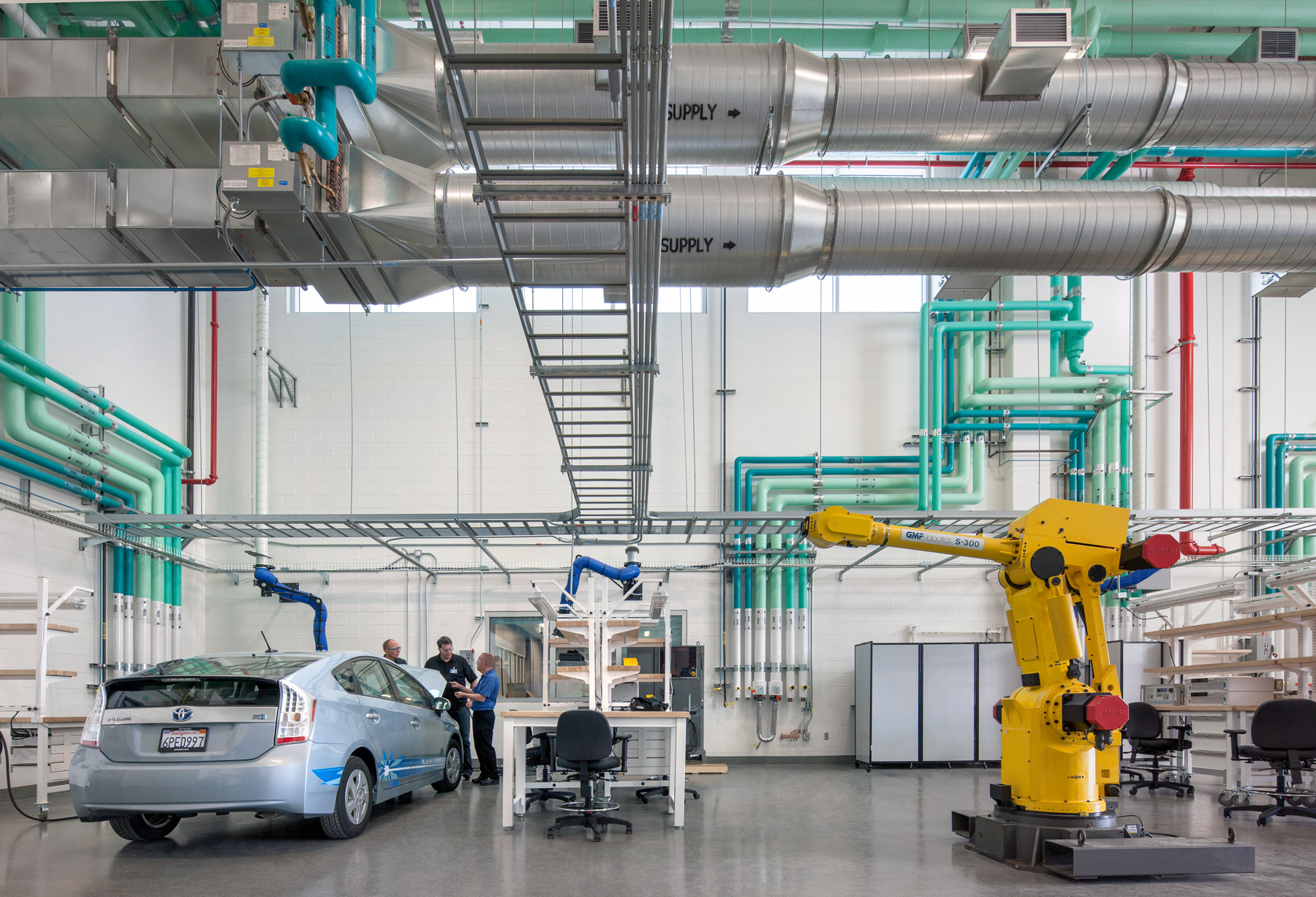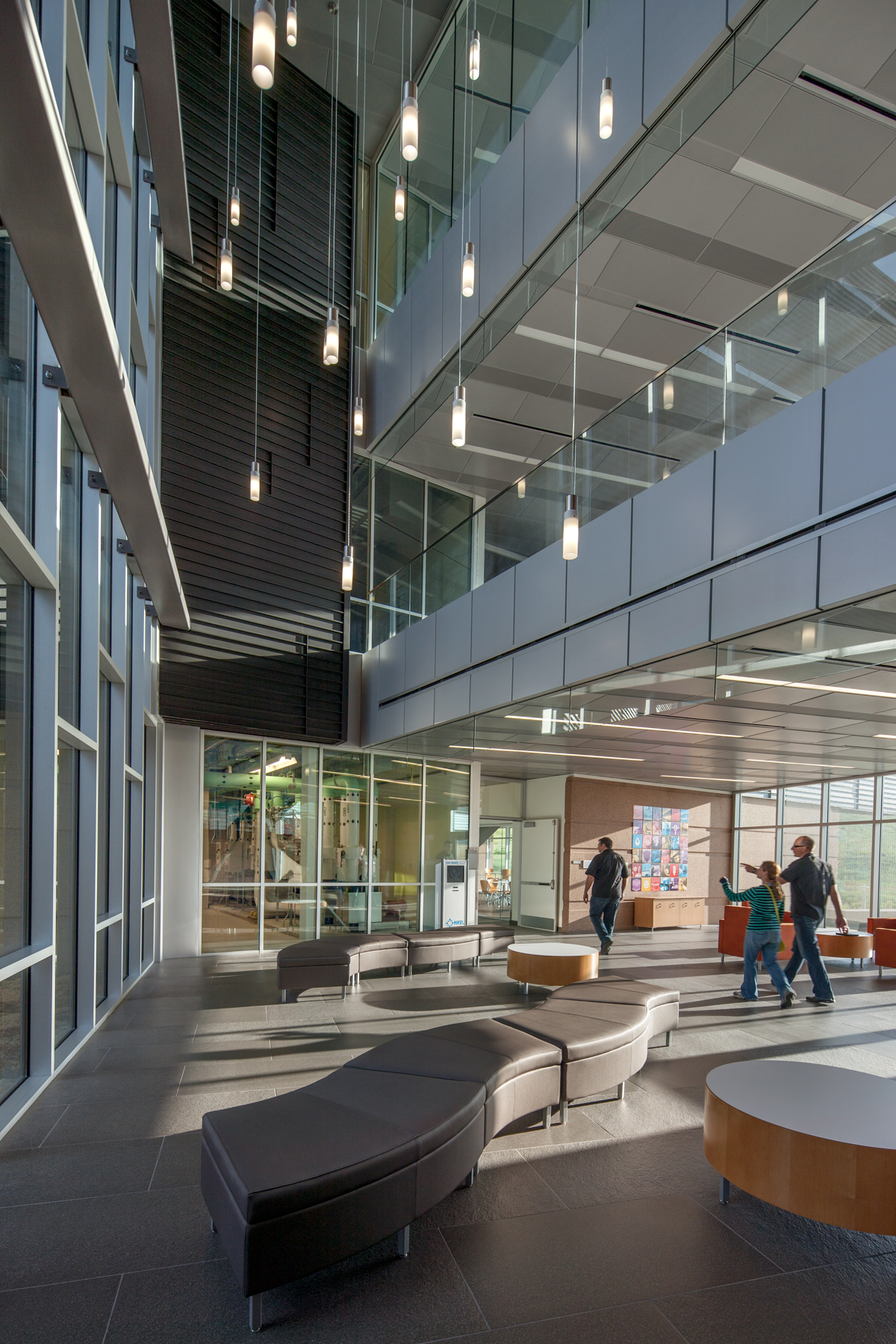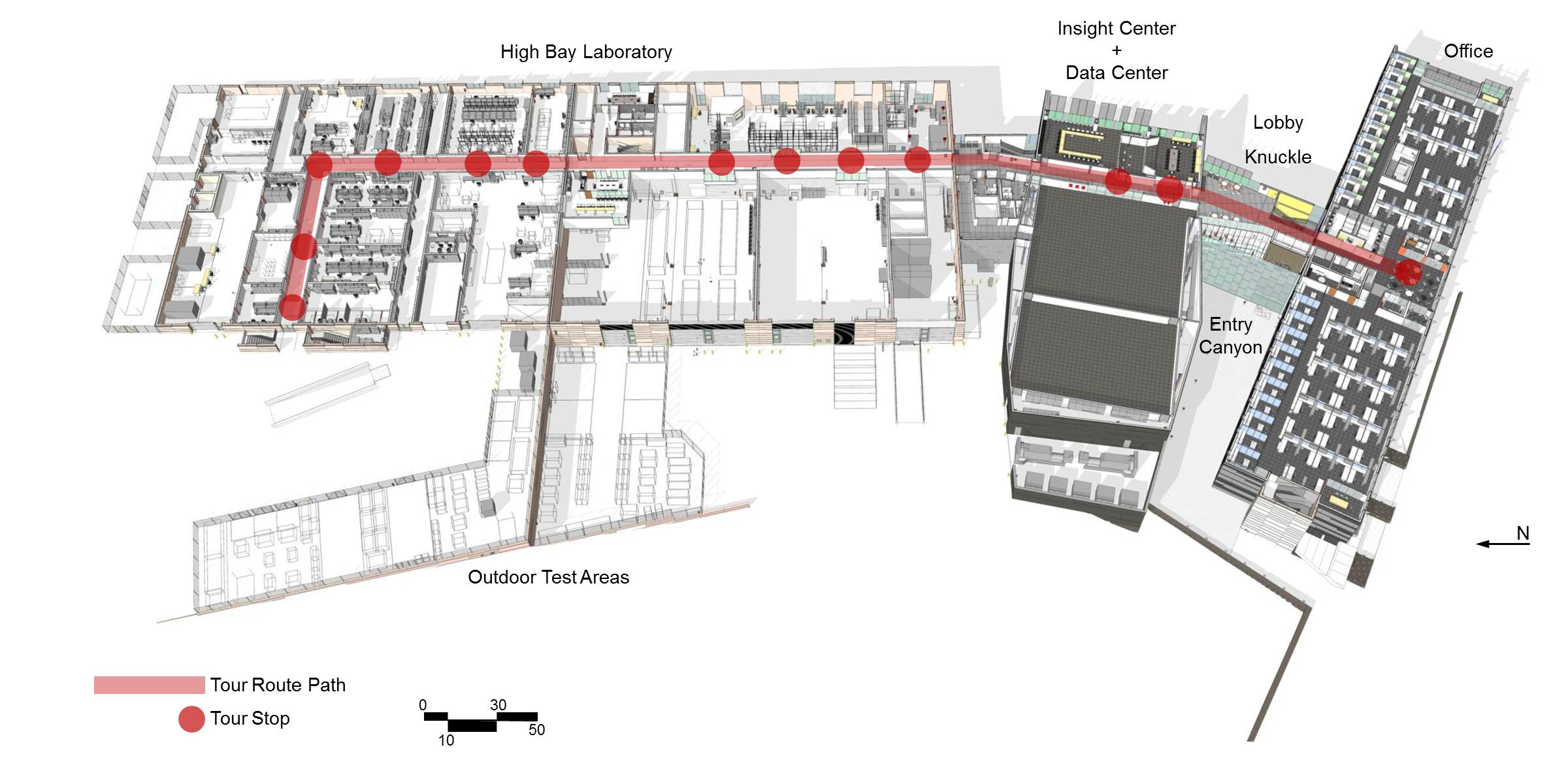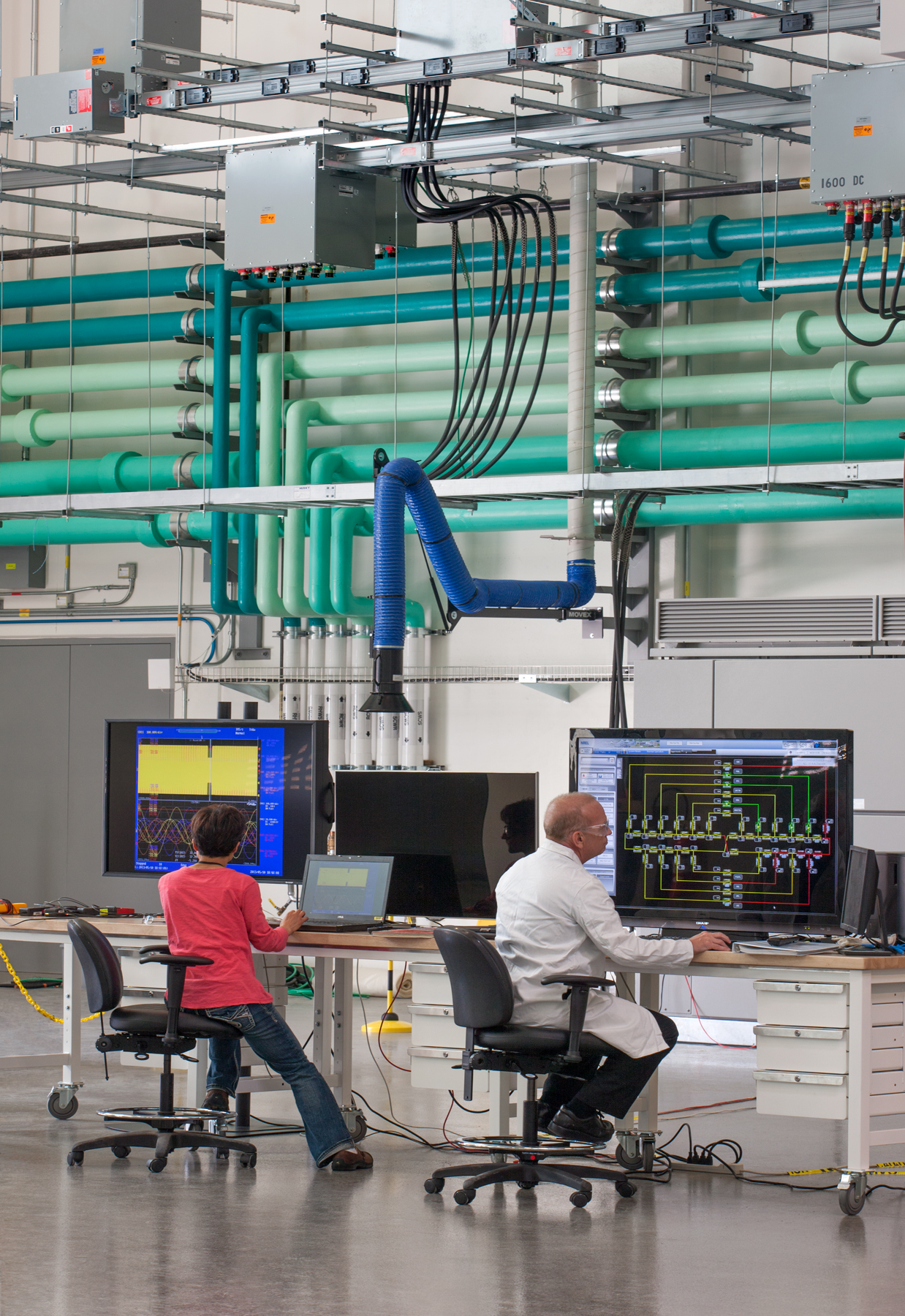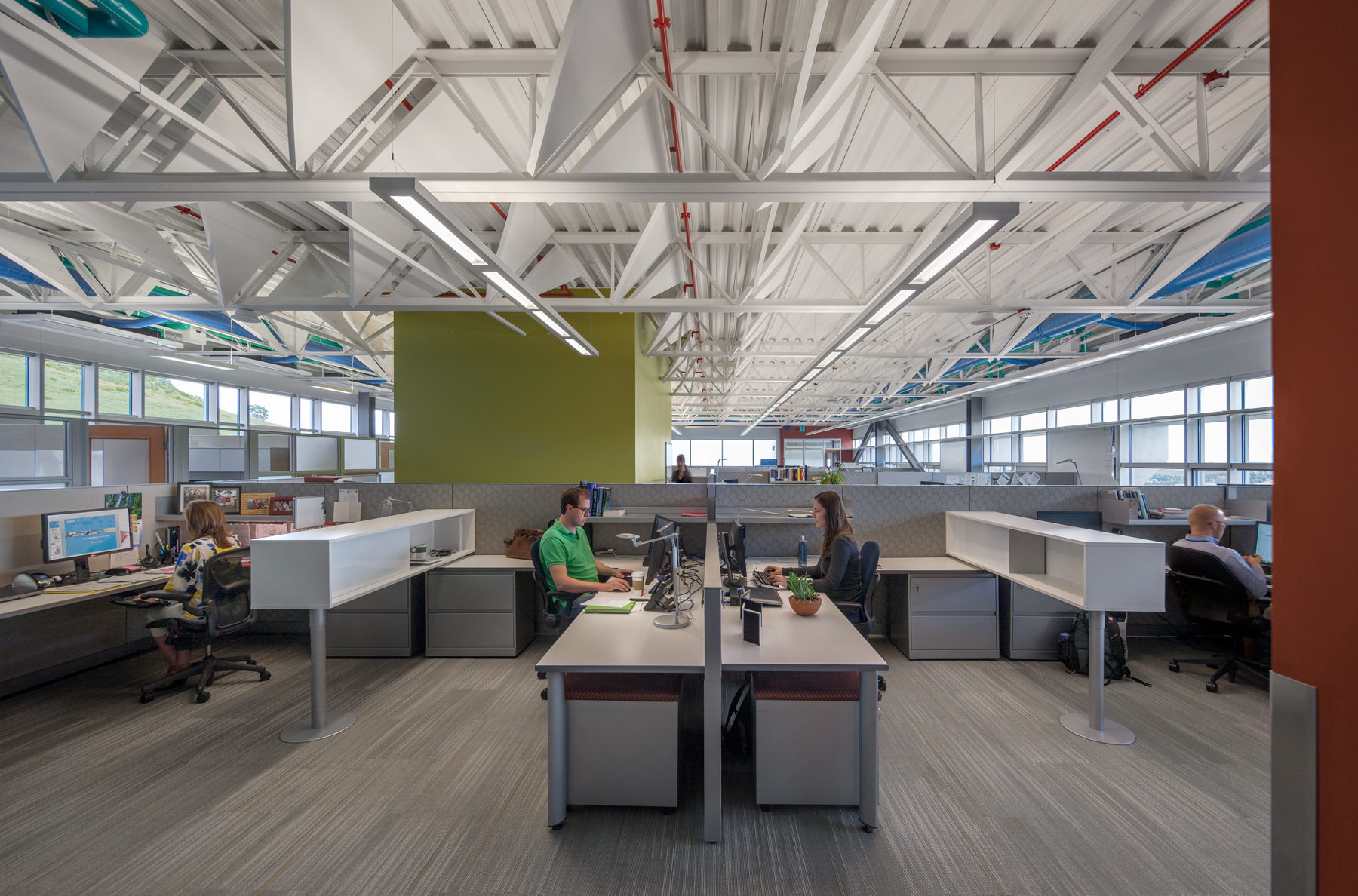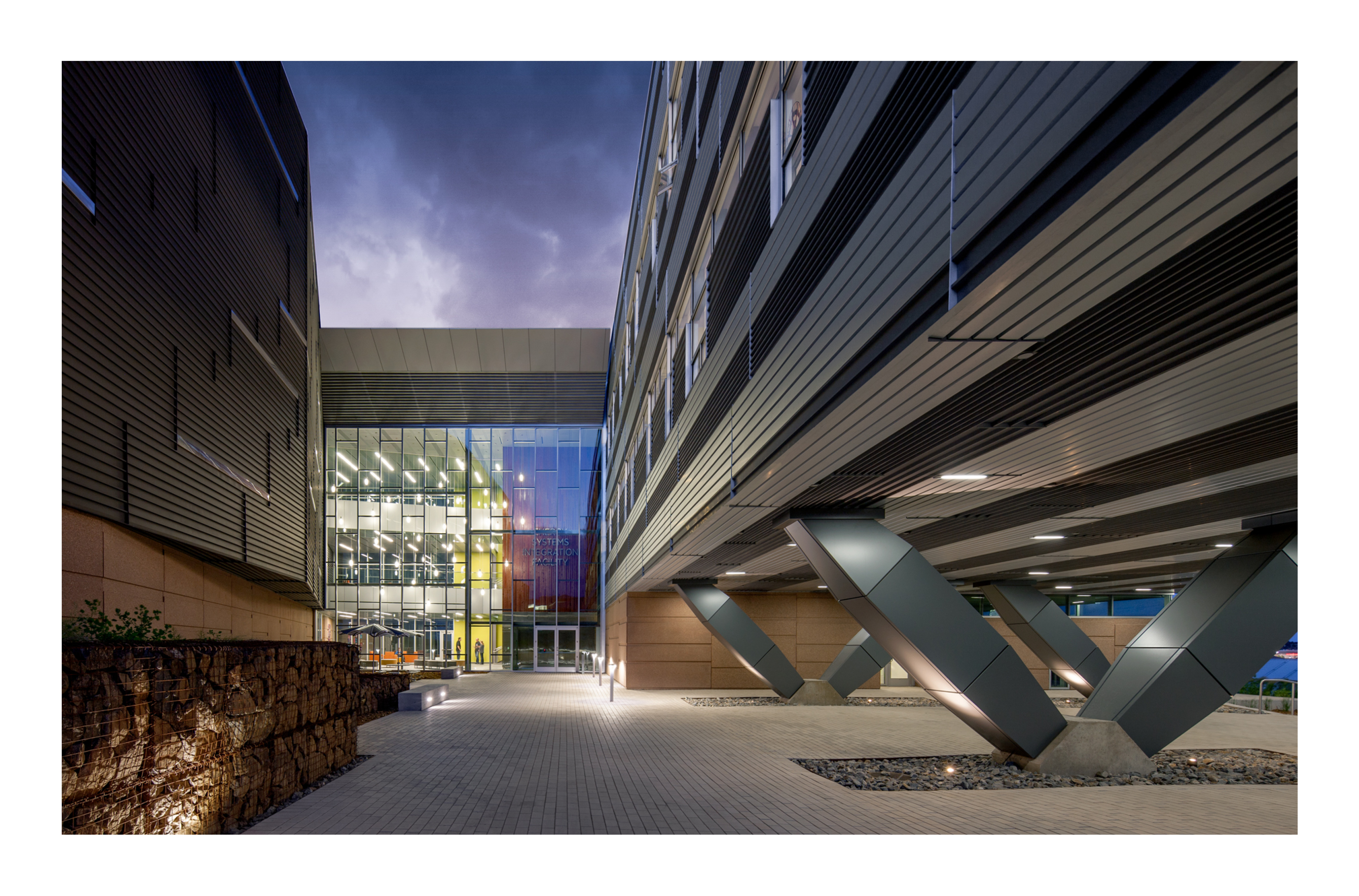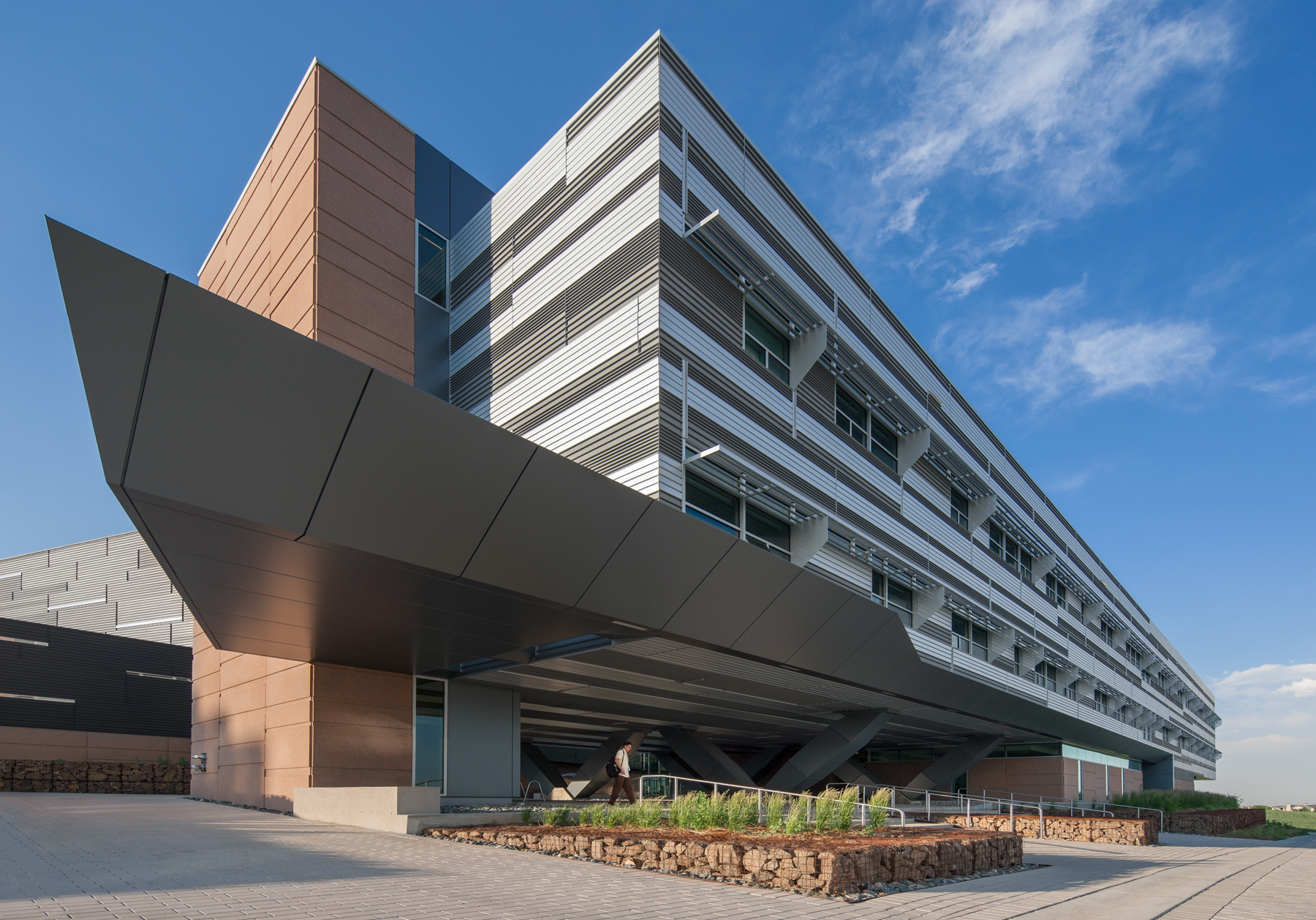One of the nation’s newest and most premier energy research facilities has been named R&D Magazine’s 2014 Laboratory of the Year.
Designed and built by SmithGroupJJR and JE Dunn Construction, the $135 million Energy Systems Integration Facility (ESIF) is located at the U.S. Department of Energy’s National Renewable Energy Laboratory in Golden, Colorado. Its one-of-a-kind design will assist NREL, and its partners, to shape the energy systems of the future.
The prestigious and international Lab of the Year competition, which is in its 48th year, recognizes the best new and renovated laboratories that combine all aspects of the building into a superior working environment. It showcases new and emerging thinking, sustainable practices and creative responses to challenges in the design, construction and operation of modern laboratories.
ESIF received this significant award for being a first-of-its-kind 182,500 sf research user facility with a unique merging of three very specialized components: an ultra-energy efficient workplace that consumes 74% less energy than the national average for office buildings, one of the world’s most energy efficient high performance computing data centers, and sophisticated high-bay laboratory spaces with outdoor test areas.
All of the labs are connected by a research electrical distribution bus (REDB), which functions as a power integration circuit capable of connecting multiple sources of energy with experiments.
The unique design of the facility, which houses 200 researchers, works in tandem to advance NREL’s sustainable mission of integrating clean and sustainable energy technologies into the grid.
“To have the ESIF facility, which advances research capabilities that don’t exist anywhere else in the world, recognized for such a prestigious award only proves the hard work and dedication of the project team,“ states Brad Woodman, AIA, LEED AP BD+C, vice president and director of SmithGroupJJR’s Phoenix office. “Congratulations to the entire ESIF team for a job well done on a project that will change the future of energy thought and use worldwide.”
Responsive Design
A showcase of sustainable design, the ESIF incorporates the best in energy efficiency, environmental performance, and advanced controls using a “whole building” integrated design approach that complies with Energy Star standards.
SmithGroupJJR and JE Dunn worked together to support the Department of Energy’s goal to develop an energy efficient building that imparts minimal impact on the environment. The ESIF earned a LEED Platinum rating from the U.S. Green Building Council, and is one of the highest certified facilities of its type to include a high performance computing data center as a major building component.
To construct such a unique facility the design-build team applied technology, like real time electronic drawings accessible through portable kiosks and hand held tablets allowing for a 100% paperless process, to deliver the project in a highly collaborative and accelerated pace while maintaining the strictest standards of quality and sustainable strategies. The building was dedicated in September 2013.
“Our team was continually challenged and encouraged to think outside the box which lead to this tremendous outcome,” shares Rodd Merchant, senior vice president at JE Dunn Construction and manager of the design-build team. “This award serves as an acknowledgement that hard work pays off.”
Unique Capabilities
Central to the laboratories is the REDB, the nation’s first integrated, megawatt-scale hardware-in-the-loop real-time simulation system. The REDB allows researchers and manufacturers to conduct integration tests at full power and actual load levels in real-time simulation, and evaluate component and system performance before going to market.
Running parallel with the REDB is the Supervisory Control and Data Acquisition (SCADA) system that monitors and controls facility-based processes and gathers and disseminates real time data for collaboration and visualization. Both systems were engineered by Affiliated Engineers, Inc. (AEI).
A petascale high performance computing data and visualization center extends the ESIF’s research capabilities and enables large-scale modeling and simulation of material properties, processes, and fully integrated systems that would be cost-prohibitive to study by direct experimentation.
SmithGroupJJR, a recognized leader in architecture, engineering, and planning, served as designer, lab planner and engineer of the three-story research complex. The firm also received a Lab of the Year Special Mention in 2008 for their work on NREL’s Science & Technology Facility. JE Dunn Construction performed as general contractor for the design-build venture. AEI engineered the high bay laboratory spaces and the REDB and SCADA systems.
Judging for this year’s competition was performed by an expert panel of architects, engineers, equipment suppliers, researchers and the editors of R&D Magazine, Laboratory Design newsletter, and co-sponsor Scientific Equipment and Furniture Association (SEFA).
Awards for the Laboratory of the Year competition will be presented at the 2014 Laboratory Design Conference on April 3, at the Westin Waltham Boston Hotel in Massachusetts.
About the Team
SmithGroupJJR (www.smithgroupjjr.com) is ranked as one of the nation’s top design firms by Architect, the magazine of the American Institute of Architects. The firm’s nationally recognized Science & Technology Practice has completed the planning and design of over 18 million square feet of academic, corporate and government research laboratories across the U.S., ranging from small laboratory renovations to large research campuses. A national leader in sustainable design, SmithGroupJJR has 351 LEED professionals and 102 LEED certified projects.
JE Dunn Construction (www.jedunn.com) maintains local offices in Denver and Colorado Springs, providing quality construction throughout the Rocky Mountains. JE Dunn Construction Company is the 12th largest domestic building contractor in the United States with 20 offices in 14 states. With more than 61 LEED professionals in Colorado and more than 100 LEED certified projects around the country, JE Dunn is a nationally ranked sustainable contractor.
Affiliated Engineers, Inc. (www.aeieng.com) is a multi-disciplinary consulting engineering firm specializing in technically complex projects nationally and internationally in the research, healthcare, energy and utilities, industrial, and sustainability markets. Building Design + Construction magazine’s #1 Science & Technology Engineering Firm, AEI has received five R&D Magazine Laboratory of the Year Awards, including three of the last four and eight other LOY honors. With 157 LEED-certified professionals in twelve offices, AEI has designed and engineered 147 LEED-accredited projects.
Related Stories
| Aug 8, 2022
Mass timber and net zero design for higher education and lab buildings
When sourced from sustainably managed forests, the use of wood as a replacement for concrete and steel on larger scale construction projects has myriad economic and environmental benefits that have been thoroughly outlined in everything from academic journals to the pages of Newsweek.
AEC Tech | Aug 8, 2022
The technology balancing act
As our world reopens from COVID isolation, we are entering back into undefined territory – a form of hybrid existence.
Legislation | Aug 5, 2022
D.C. City Council moves to require net-zero construction by 2026
The Washington, D.C. City Council unanimously passed legislation that would require all new buildings and substantial renovations in D.C. to be net-zero construction by 2026.
Cultural Facilities | Aug 5, 2022
A time and a place: Telling American stories through architecture
As the United States enters the year 2026, it will commence celebrating a cycle of Sestercentennials, or 250th anniversaries, of historic and cultural events across the land.
Sponsored | | Aug 4, 2022
Brighter vistas: Next-gen tools drive sustainability toward net zero line
New technologies, innovations, and tools are opening doors for building teams interested in better and more socially responsible design.
| Aug 4, 2022
Newer materials for green, resilient building complicate insurance underwriting
Insurers can’t look to years of testing on emerging technology to assess risk.
Sustainability | Aug 4, 2022
To reduce disease and fight climate change, design buildings that breathe
Healthy air quality in buildings improves cognitive function and combats the spread of disease, but its implications for carbon reduction are perhaps the most important benefit.
Multifamily Housing | Aug 4, 2022
Faculty housing: A powerful recruitment tool for universities
Recruitment is a growing issue for employers located in areas with a diminishing inventory of affordable housing.
Multifamily Housing | Aug 3, 2022
7 tips for designing fitness studios in multifamily housing developments
Cortland’s Karl Smith, aka “Dr Fitness,” offers advice on how to design and operate new and renovated gyms in apartment communities.
Building Materials | Aug 3, 2022
Shawmut CEO Les Hiscoe on coping with a shaky supply chain in construction
BD+C's John Caulfield interviews Les Hiscoe, CEO of Shawmut Design and Construction, about how his firm keeps projects on schedule and budget in the face of shortages, delays, and price volatility.


